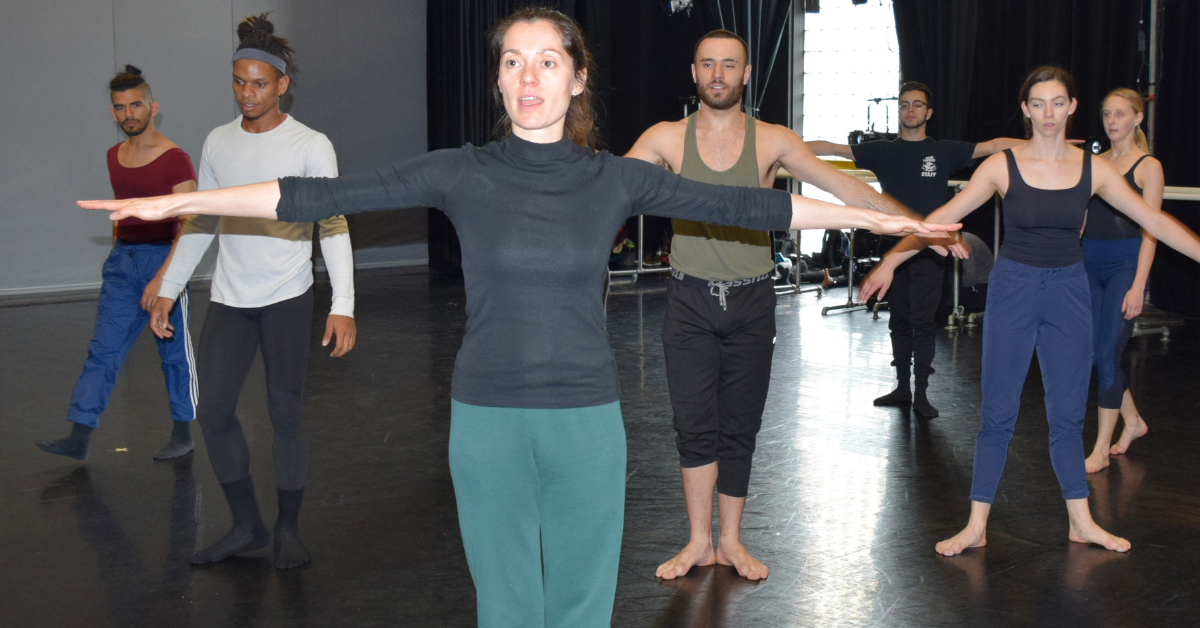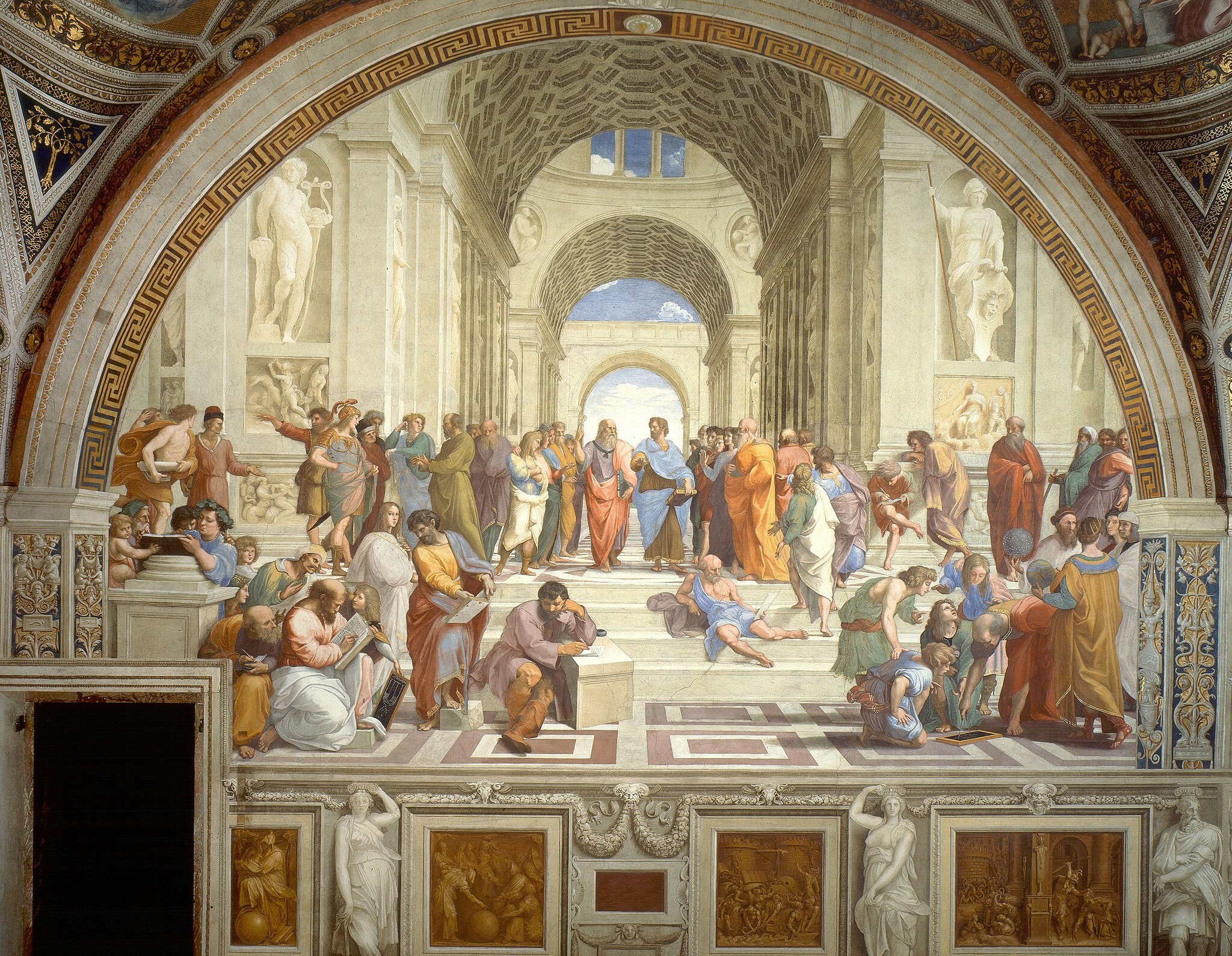
The School of Athens, Raffaello
Art is a force of transformation, challenging societal norms, inspiring change, and documenting human evolution. From prehistoric cave paintings to modern conceptual art, these 30 masterpieces stand out for their ability to shape culture and provoke thought. Let’s explore the stories behind these iconic works that redefined art and society.
Art has consistently influenced how societies evolve, serving as both a reflection of and a catalyst for change. Certain masterpieces stand out for their profound impact, challenging perceptions, igniting social movements, or redefining artistic conventions. This list explores 20 artworks that have left a lasting legacy, shaping the cultural, political, and artistic landscapes in ways that continue to resonate today.

1. The Lascaux Cave Paintings (c. 17,000 BCE)
The Lascaux Cave Paintings are among the earliest known examples of human creativity, located in southwestern France and discovered in 1940. These prehistoric works feature vibrant depictions of animals such as horses, deer, and bulls, showcasing humanity's first attempts at visual storytelling. Beyond their aesthetic value, they hold immense historical significance, offering insights into the spiritual and cultural lives of early humans. The paintings’ detailed craftsmanship suggests a deep understanding of the natural world and a desire to communicate. They are foundational to the evolution of art, emphasizing the human need for expression and connection. As some of the oldest known art, they have inspired generations of artists and historians, solidifying their place as a cornerstone of cultural heritage.
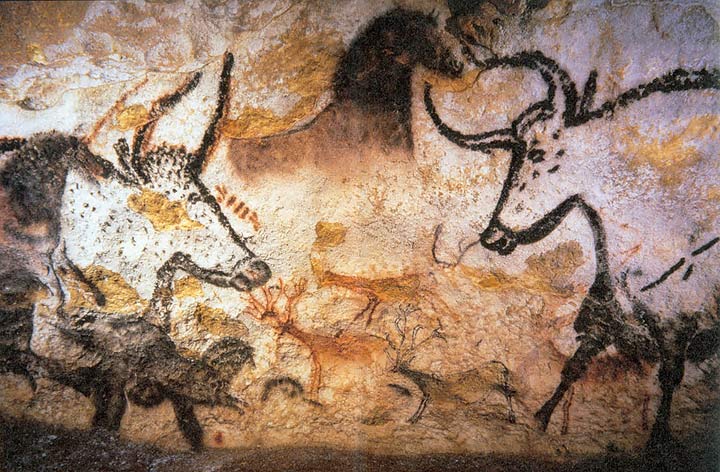

2. The Code of Hammurabi (1754 BCE): Revolutionary Symbol of Justice
The Code of Hammurabi, created in 1754 BCE in ancient Babylon, is both a legal document and a monumental work of art. Carved into black basalt, it features a relief of King Hammurabi receiving the laws from Shamash, the Mesopotamian sun god, symbolizing the divine authority behind the laws. This stele is revolutionary for using art to legitimize power and communicate societal principles, blending governance, religion, and visual storytelling. Crafted with bronze or copper chisels and abrasive tools, its intricate cuneiform and detailed relief showcase the advanced skill of Mesopotamian artisans. The Code set a precedent for public monuments as tools for societal regulation, leaving a lasting legacy in the relationship between law, art, and power.

3. The Parthenon Marbles (447–438 BCE)
The Parthenon Marbles, also known as the Elgin Marbles, were sculpted by Phidias and his workshop to decorate the Parthenon in Athens. These masterpieces of classical Greek art depict mythological scenes, deities, and everyday life, showcasing the pinnacle of ancient Greek artistic achievement. More than just decorative, the marbles symbolize the political and intellectual dominance of Athens during its Golden Age. The Parthenon itself was a temple dedicated to Athena, reflecting the deep integration of religion, politics, and civic identity in Greek society. Today, the marbles remain a subject of intense debate regarding cultural ownership, as Greece has long requested their return from the British Museum, where they have been housed since the early 19th century.
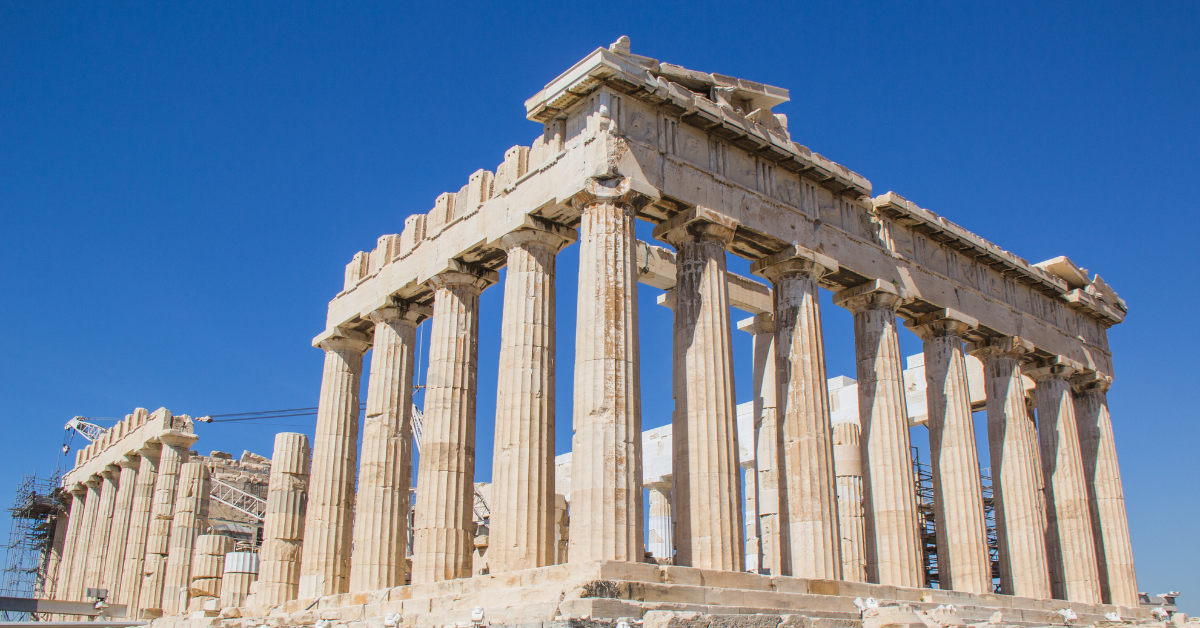
4. The Terracotta Army (c. 210 BCE)
Discovered in 1974, the Terracotta Army consists of thousands of life-sized warriors, horses, and chariots buried alongside China's first emperor, Qin Shi Huang. This vast funerary art project reflects the emperor’s vision of immortality and absolute control, even in the afterlife. The individualized features of each soldier suggest a sophisticated understanding of realism and artistic craftsmanship. Politically, the army symbolizes the unification of China under Qin rule, as his policies laid the foundation for centralized governance. Culturally, the army’s preservation has provided historians with invaluable insights into ancient Chinese warfare, society, and artistry. Its discovery significantly reshaped global perceptions of early Chinese civilization.
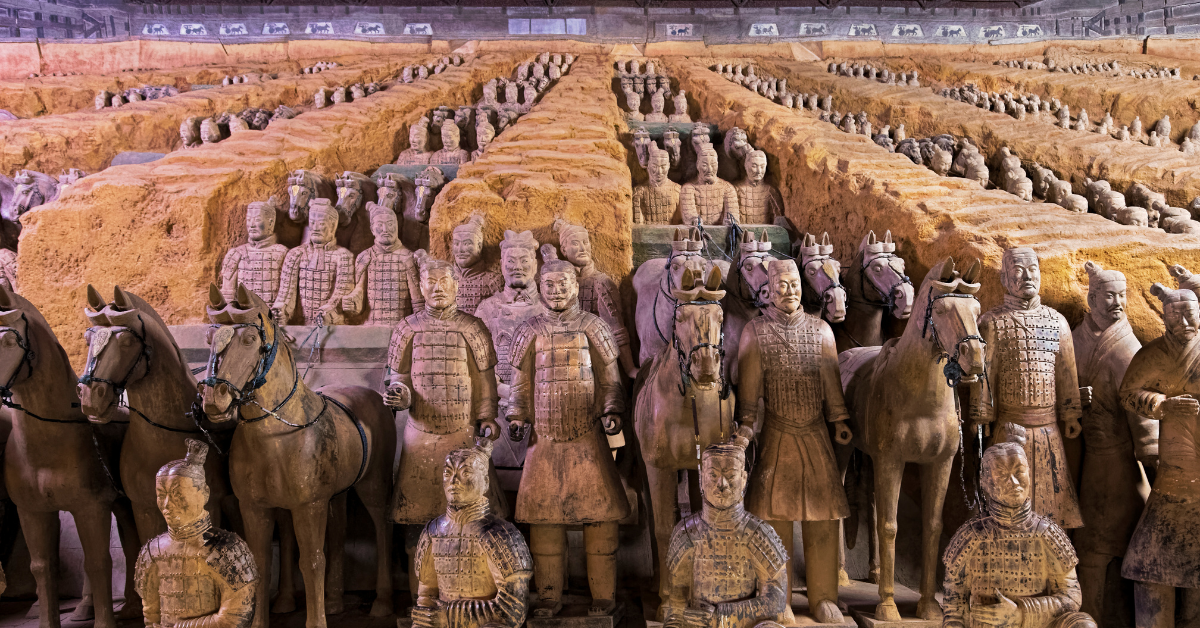
5. The Bayeux Tapestry (c. 1070 CE)
A monumental embroidered cloth nearly 230 feet long, the Bayeux Tapestry vividly narrates the Norman Conquest of England in 1066. Created under the patronage of Bishop Odo of Bayeux, half-brother of William the Conqueror, the tapestry functions as both propaganda and historical record, legitimizing Norman rule. Its detailed depictions of medieval warfare, armor, and daily life provide an unparalleled visual chronicle of the period. The work also underscores the importance of storytelling in art and history, as it was designed for an audience that largely relied on visual media rather than written text. Today, the tapestry remains a crucial source for understanding the power struggles and cultural transformations of medieval Europe.
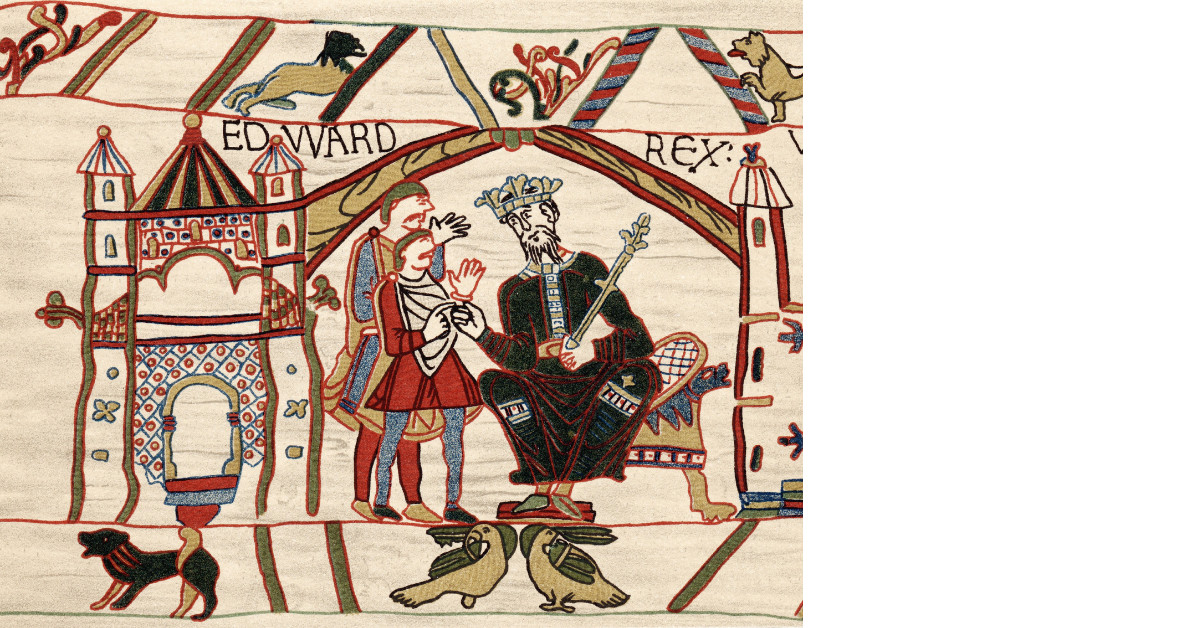

6. The Lindisfarne Gospels (c. 700 CE)
This illuminated manuscript, created in the early medieval period in Northumbria, England, is one of the finest examples of Insular art. Its intricate designs, blending Celtic, Anglo-Saxon, and Mediterranean influences, reveal the cross-cultural exchanges that shaped early medieval art. The book was produced in honor of Saint Cuthbert and represents the deep spiritual devotion of monastic scribes. Beyond its religious significance, the Lindisfarne Gospels played a crucial role in preserving knowledge and literacy during the so-called Dark Ages. Its lavish decoration and calligraphy underscore the importance of visual beauty in conveying sacred texts, a principle that would influence Christian manuscript traditions for centuries.
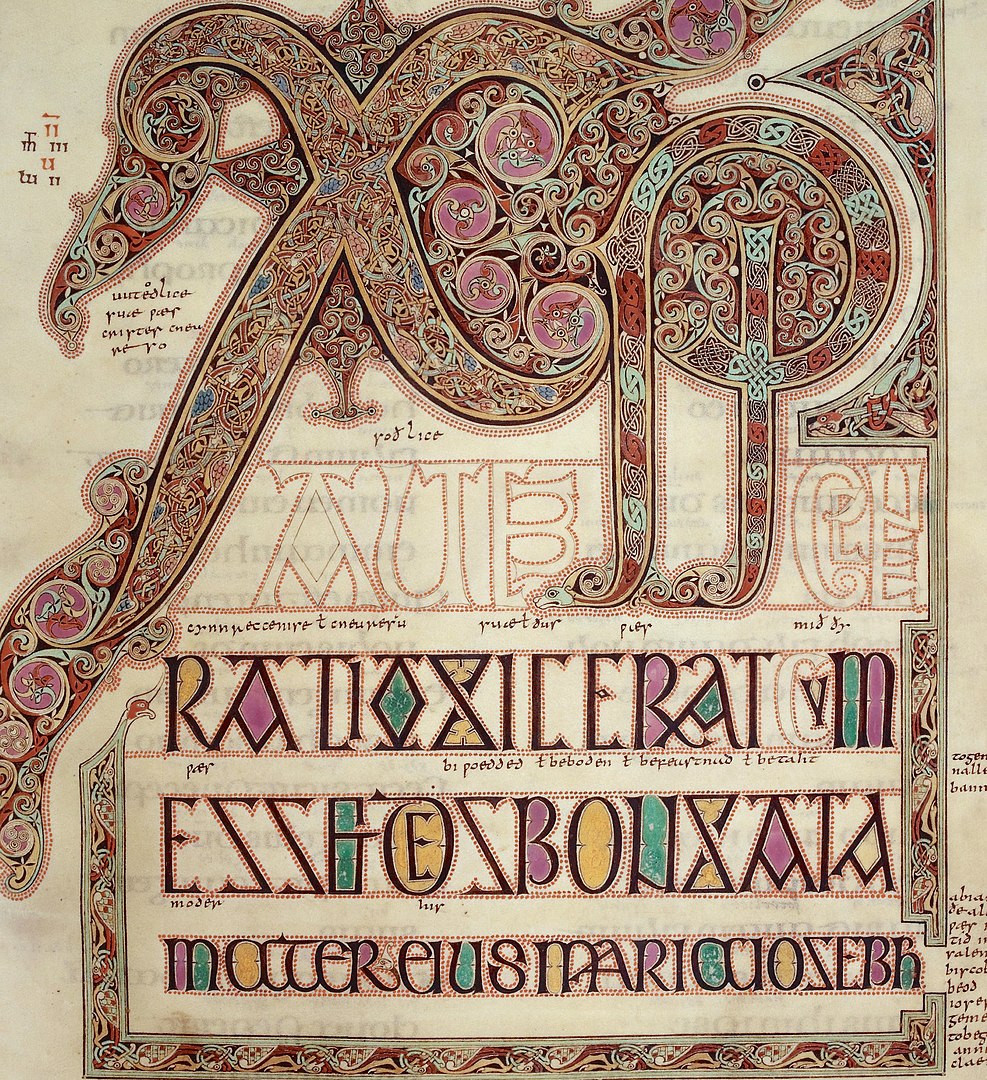
7. The Great Mosque of Córdoba (784–987 CE, Spain)
A masterpiece of Islamic architecture, the Great Mosque of Córdoba reflects the cultural and political dominance of the Umayyad Caliphate in medieval Spain. Its expansive horseshoe arches, intricate mosaics, and hypostyle hall create a sense of divine grandeur, demonstrating the synthesis of Roman, Visigothic, and Islamic artistic influences. The mosque later became a Catholic cathedral after the Christian Reconquista, symbolizing the complex and often contentious interactions between Muslim, Christian, and Jewish communities in Spain. Politically, it stood as a powerful statement of Islamic rule in the Iberian Peninsula, while artistically, it set a precedent for Moorish architectural innovation throughout the region.

8. The Book of Kells (c. 800 CE)
One of the most celebrated illuminated manuscripts in history, The Book of Kells is a masterpiece of medieval Christian art, blending intricate Celtic patterns with biblical storytelling. Created by Irish monks, the manuscript reflects the spiritual devotion and artistic sophistication of early medieval monasteries. Its vibrant colors, elaborate calligraphy, and gold embellishments transformed sacred texts into awe-inspiring visual experiences, reinforcing the power of Christianity in early medieval Europe. Politically, it symbolized Ireland’s role as a center of learning and religious devotion during a time of Viking invasions. Today, it stands as a testament to the fusion of art, faith, and scholarship in the medieval world.
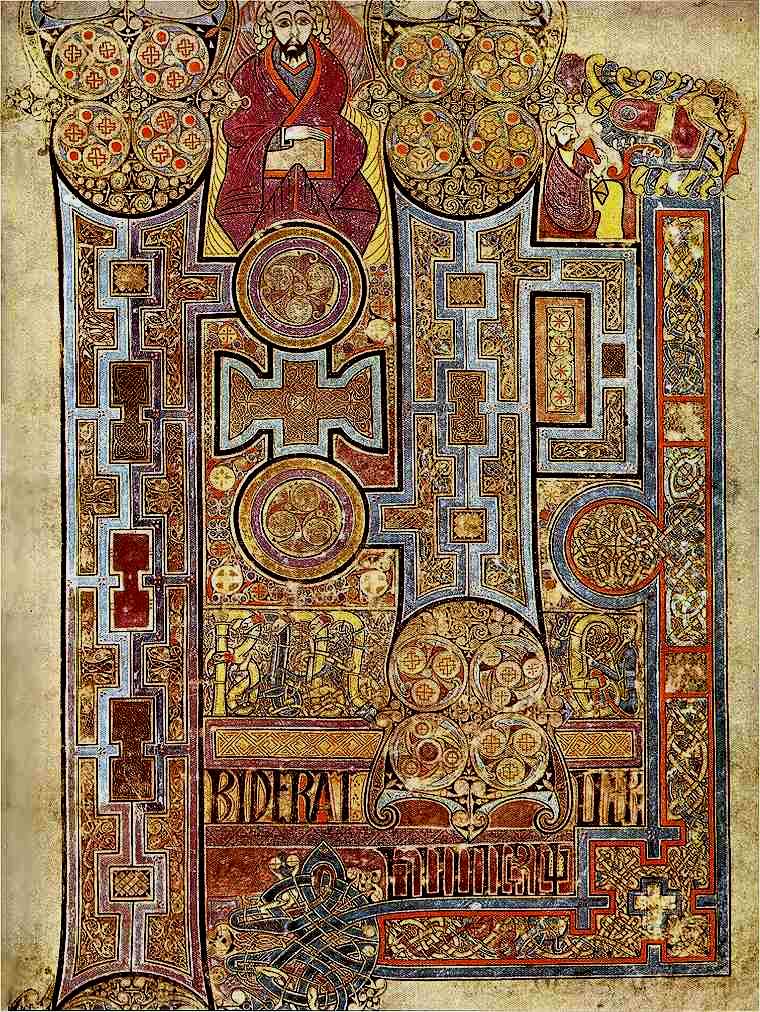
9. The Dome of the Rock (691 CE, Jerusalem)
One of the most iconic architectural achievements in Islamic history, the Dome of the Rock was constructed in Jerusalem by the Umayyad Caliph Abd al-Malik. The building’s striking golden dome and intricate tilework reflect the grandeur and theological significance of early Islamic art. Positioned on the Temple Mount, the site holds deep religious importance for Muslims, Christians, and Jews alike, symbolizing the region’s contested history. Politically, it asserted Islamic power over Jerusalem, serving as both a religious monument and a statement of sovereignty. The Dome of the Rock's architectural innovations, including its octagonal plan and lavish mosaics, influenced Islamic art and architecture for centuries.
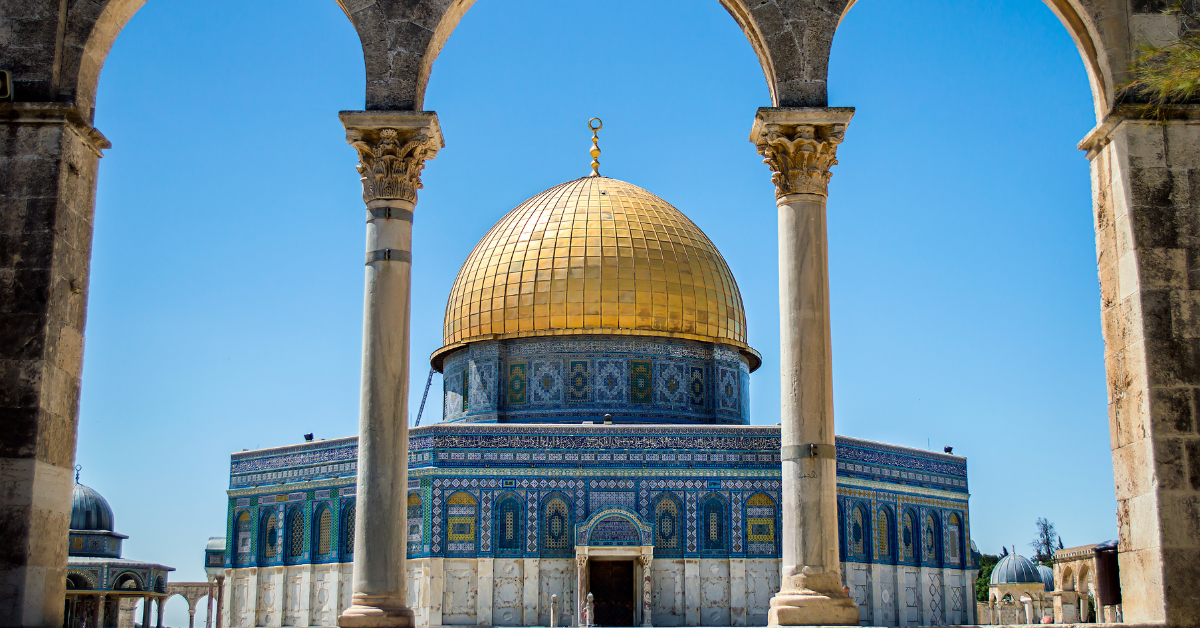
10. The Night Attack on the Sanjō Palace (c. 1250–1300 CE)
A dynamic handscroll painting from Japan’s Kamakura period, The Night Attack on the Sanjō Palace vividly depicts a 12th-century political coup during the Heiji Rebellion. The scroll captures the chaos of battle with sweeping motion and intricate details, showcasing the Japanese yamato-e painting style. As both historical documentation and artistic expression, it highlights the power struggles of Japan’s samurai class and the shifting dynamics of feudal rule. Its visual storytelling would later influence Japanese manga and animation, demonstrating how medieval Japanese art remains relevant in modern creative traditions. Politically, it underscores the brutal conflicts that shaped the rise of the shogunate system.
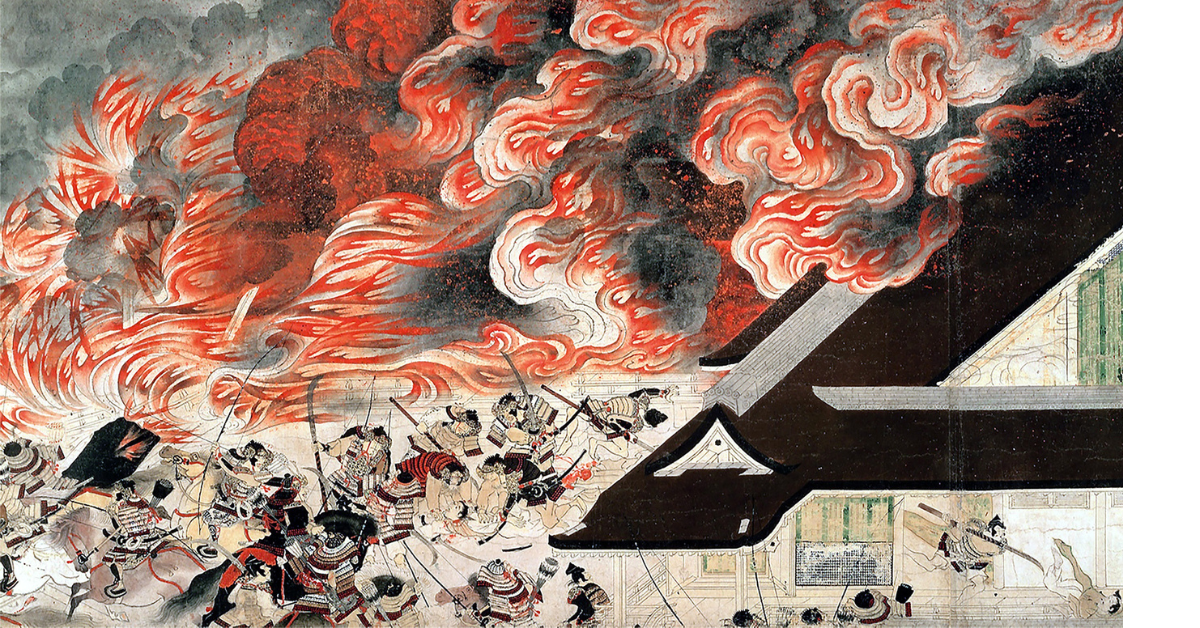
12. The Arnolfini Portrait by Jan van Eyck (1434)
Jan van Eyck’s "The Arnolfini Portrait" is a masterpiece of Northern Renaissance art, celebrated for its intricate detail and use of oil paint. The painting captures Giovanni di Nicolao Arnolfini and his wife in a domestic setting, surrounded by symbolic objects that convey wealth, fidelity, and status. Its use of a convex mirror at the center reflects not just the couple but also the artist himself, highlighting van Eyck’s technical brilliance and innovation. This work is pivotal in the history of art for its pioneering use of oil paint to achieve luminous detail and texture. It marked a shift toward realism and narrative in portraiture, influencing generations of artists and reshaping the way personal identity and domestic life were portrayed in art. (Source: Arthive)


13. Studies of the Fetus in the Womb by Leonardo da Vinci (c. 1510)
Leonardo da Vinci’s anatomical sketches, including "Studies of the Fetus in the Womb," reflect his genius at blending art and science. These drawings are based on meticulous dissections and observations, offering unprecedented accuracy in depicting human anatomy. At a time when such studies were considered taboo, Leonardo’s work challenged societal norms and expanded the boundaries of scientific knowledge. His attention to detail and ability to convey the beauty of the human form emphasized the interconnectedness of art and science. These sketches laid the groundwork for modern anatomical studies, highlighting art’s role in advancing human understanding and knowledge.
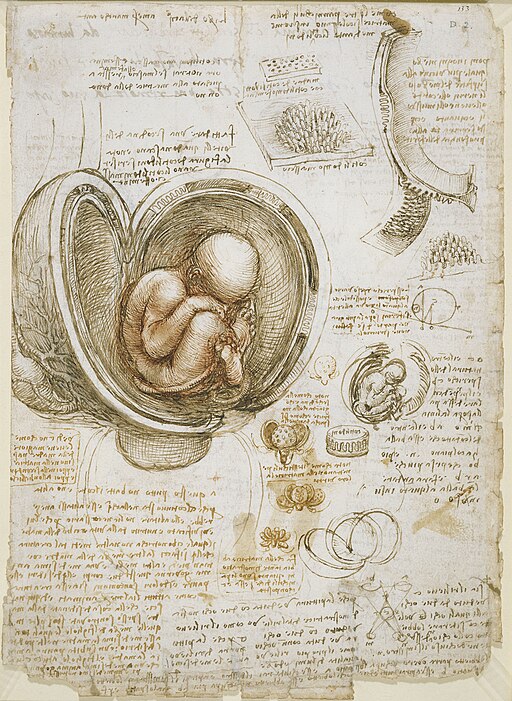
14. The Last Supper by Leonardo da Vinci (1498)
Leonardo’s "The Last Supper" is one of the most famous religious artworks, capturing the moment Jesus announces his betrayal. Painted on a convent wall in Milan, its innovative composition places the disciples in dynamic groupings, each reacting uniquely to the revelation. The work’s use of perspective creates a sense of depth and immediacy, drawing viewers into the scene. It revolutionized narrative art by emphasizing human emotion and interaction, making religious themes more relatable. "The Last Supper" remains a touchstone for both religious and secular audiences, exemplifying Leonardo’s mastery of storytelling through art. (Source: Arthive)
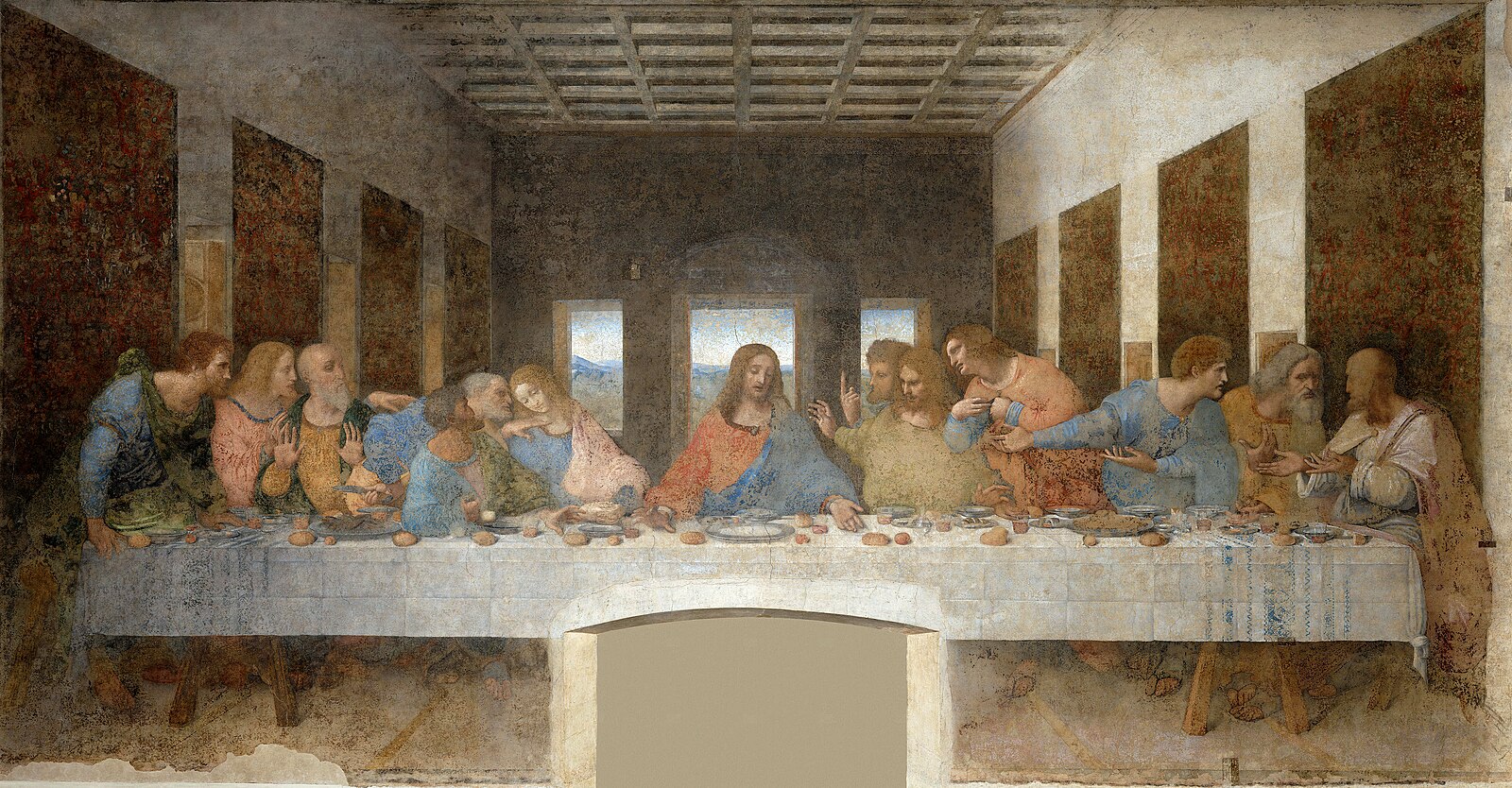
15. The Birth of Venus by Sandro Botticelli (1486)
Botticelli’s "The Birth of Venus" is a Renaissance masterpiece that celebrates beauty, love, and mythology. It depicts Venus, the Roman goddess of love, emerging from the sea on a shell, surrounded by flowing drapery and natural elements. The painting’s elegant composition and delicate use of color convey a sense of ethereal grace. As a symbol of the humanistic values of the Renaissance, it highlights the era’s fascination with classical antiquity and the exploration of human potential. Its timeless appeal continues to influence artists and captivate audiences, making it a quintessential representation of artistic beauty. (Source: Arthive)
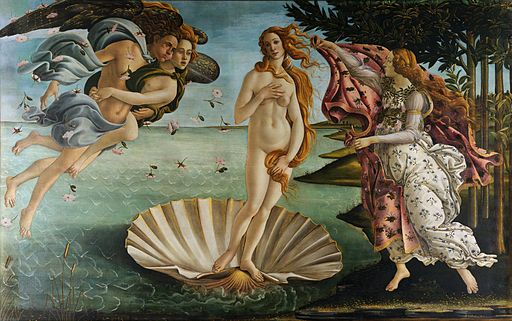
16. Las Meninas by Diego Velázquez (1656)
"Las Meninas," painted by Diego Velázquez, is a complex and enigmatic masterpiece that redefines traditional portraiture. The painting features the Spanish royal family, with Velázquez himself included in the composition as he paints the scene. The interplay of perspective, light, and reflection creates a dynamic narrative that blurs the boundaries between the viewer, the subjects, and the artist. This groundbreaking work challenges the conventions of representation, inviting viewers to question the nature of reality and illusion. "Las Meninas" has inspired countless interpretations and remains a pivotal work in the study of art history.
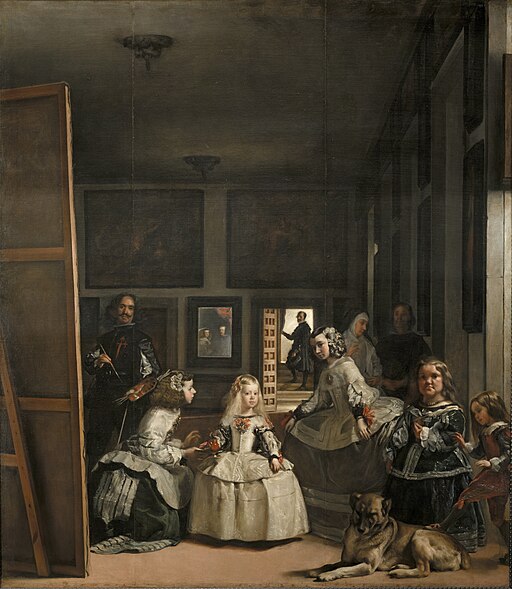
17. The Death of Marat by Jacques-Louis David (1793)
Jacques-Louis David’s "The Death of Marat" immortalizes the murdered French revolutionary leader Jean-Paul Marat. Painted during the height of the French Revolution, the work portrays Marat as a martyr, emphasizing his sacrifice for the cause. The stark realism and dramatic lighting give the painting an emotional intensity that resonated deeply with its audience. By combining propaganda with masterful artistry, David turned Marat into an enduring symbol of revolutionary ideals. This artwork demonstrates how art can be a powerful tool for political messaging, shaping public sentiment and reinforcing ideological movements.
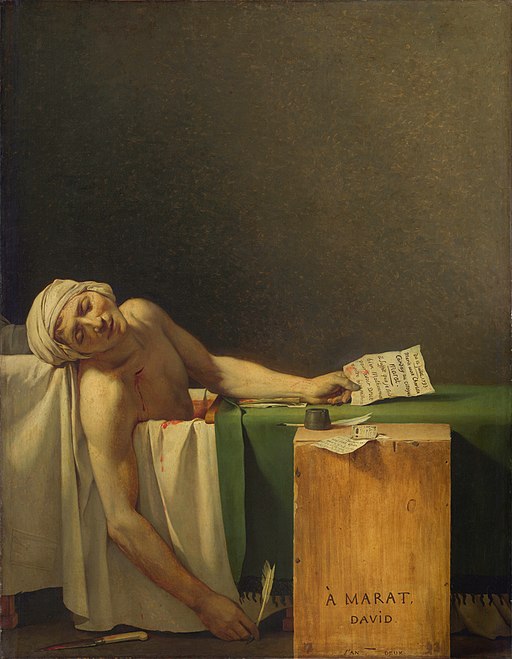
18. The Starry Night by Vincent van Gogh (1889)
Vincent van Gogh’s "The Starry Night" is a cornerstone of Post-Impressionism, celebrated for its emotive power and innovative use of color. Painted during his stay at the Saint-Rémy-de-Provence asylum, the work captures a swirling night sky over a tranquil village. The painting’s dynamic brushstrokes and vivid palette convey van Gogh’s emotional intensity and unique perspective on the natural world. "The Starry Night" has become an enduring symbol of artistic expression and the capacity of art to channel personal struggles into universal beauty. Its influence extends across art, culture, and even psychology, making it one of the most recognized works in the world.
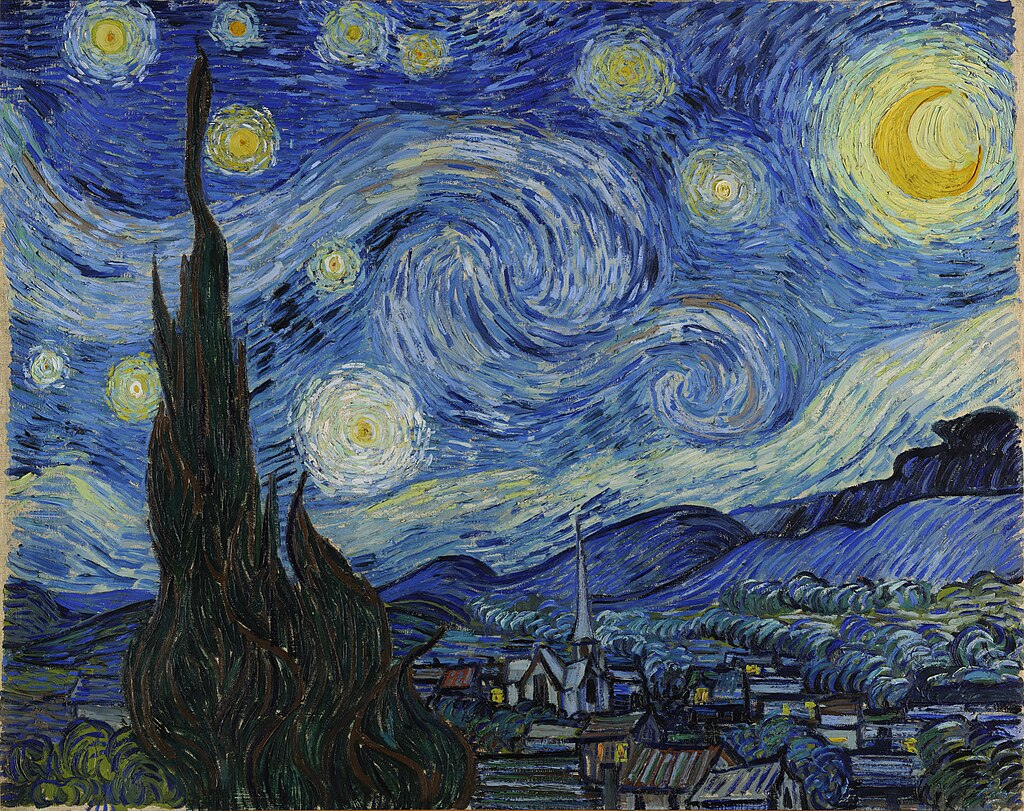
19. The Scream by Edvard Munch (1893)
Edvard Munch’s "The Scream" is a haunting depiction of existential anxiety, capturing a figure in anguish against a tumultuous sky. The painting’s bold colors and dramatic forms create an intense emotional impact, resonating with viewers on a deeply personal level. As a precursor to Expressionism, it broke away from traditional realism to focus on inner turmoil and psychological depth. "The Scream" has become a universal symbol of human vulnerability and modern alienation, influencing art, popular culture, and even memes. Its timeless relevance highlights the enduring power of art to explore complex emotions and societal tensions.
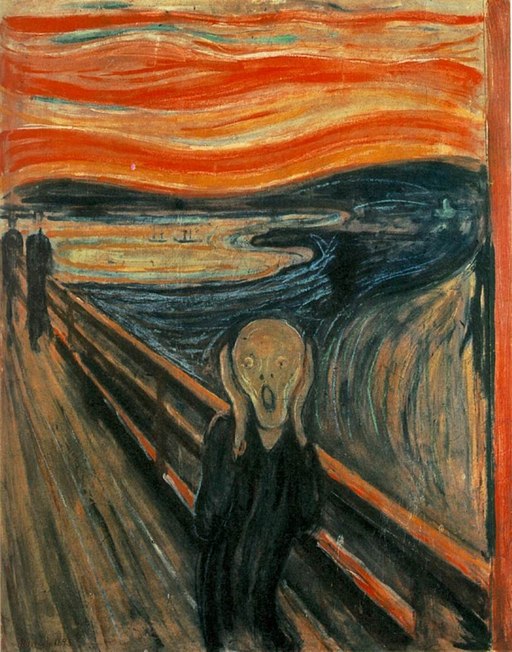
20. Les Demoiselles d'Avignon by Pablo Picasso (1907)
Pablo Picasso’s "Les Demoiselles d'Avignon" is a revolutionary work that marked the birth of Cubism. Depicting five female figures with fragmented, geometric forms, the painting challenged traditional notions of perspective and representation. Influenced by African and Iberian art, Picasso broke away from classical aesthetics, creating a dynamic and confrontational composition. "Les Demoiselles d'Avignon" was a bold statement that redefined the boundaries of modern art, influencing countless movements and artists. Its daring approach to form and subject matter cemented Picasso’s legacy as one of the most innovative figures in art history.
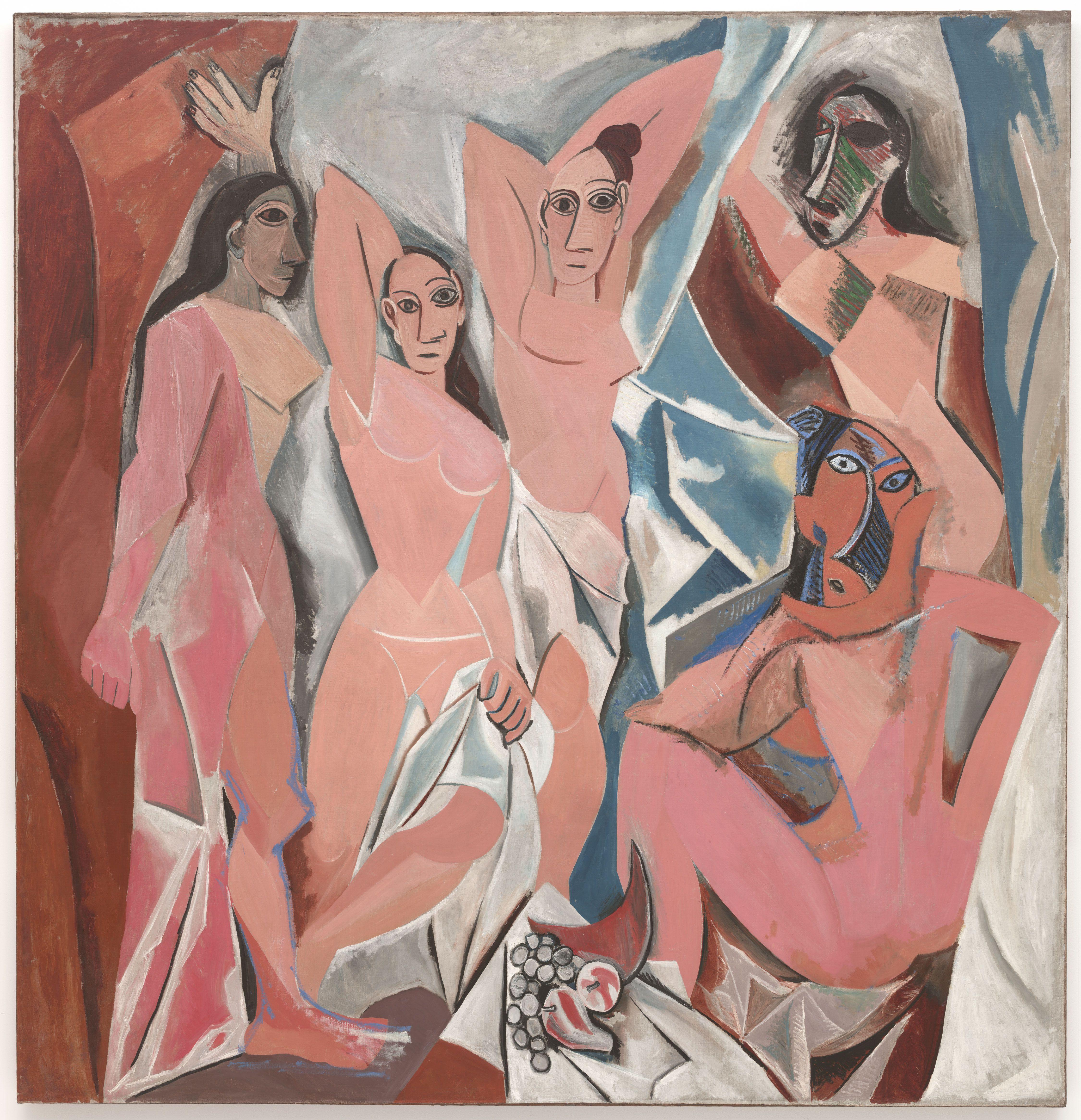

21. The Great Wave off Kanagawa by Katsushika Hokusai (1832)
Katsushika Hokusai’s "The Great Wave off Kanagawa" is an iconic woodblock print that has become synonymous with Japanese art. The composition depicts a towering wave threatening small fishing boats, with Mount Fuji visible in the background. This work captures the raw power of nature and the vulnerability of human life, symbolizing the harmony and tension between humanity and the environment. Hokusai’s innovative use of color and perspective had a profound influence on Western art, inspiring Impressionist and Post-Impressionist artists. "The Great Wave" not only elevated Japanese woodblock printing to global recognition but also became a lasting symbol of cultural exchange and artistic ingenuity.

22. Composition VII by Wassily Kandinsky (1913)
Wassily Kandinsky’s "Composition VII" is a vibrant explosion of color and form, widely regarded as one of the most important abstract works of the 20th century. Kandinsky believed in the spiritual power of art, using abstract shapes and colors to evoke emotions and ideas. This painting, with its dynamic interplay of lines and hues, captures a sense of chaos and harmony, reflecting Kandinsky’s vision of art as a universal language. "Composition VII" broke new ground by abandoning representational imagery, influencing countless artists and solidifying Kandinsky’s legacy as a pioneer of abstraction.
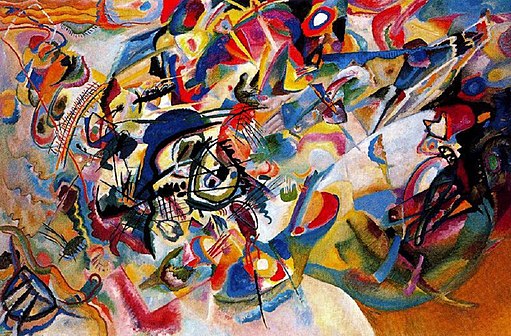
23. Black Square by Kazimir Malevich (1915)
Kazimir Malevich’s "Black Square" is a seminal work in the Suprematist movement, representing a radical departure from traditional art forms. The simple, stark black square on a white background challenges viewers to question the essence of art and its purpose. Malevich intended the piece to symbolize pure artistic feeling, free from the constraints of representation. "Black Square" sparked debates about the nature of creativity and continues to influence minimalist and conceptual art. Its bold rejection of conventional aesthetics marked a turning point in modern art, paving the way for new artistic movements.
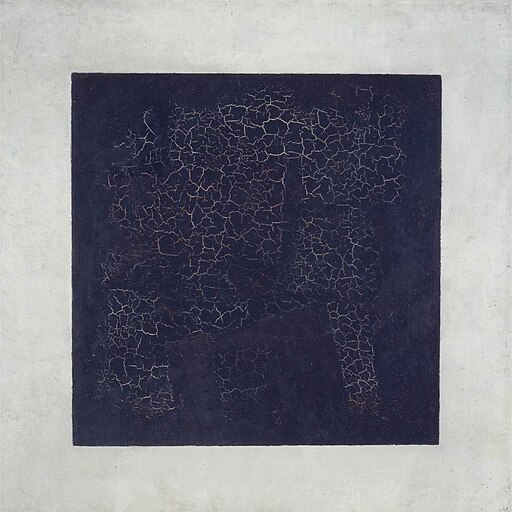
24. Fountain by Marcel Duchamp (1917)
Marcel Duchamp’s "Fountain," a readymade sculpture consisting of a porcelain urinal, redefined the boundaries of art. By presenting an everyday object as a work of art, Duchamp challenged traditional notions of artistic creation and authorship. "Fountain" was a provocative statement that questioned the role of the artist and the institution in defining art. This groundbreaking work laid the foundation for conceptual art, emphasizing ideas over aesthetics. Duchamp’s "Fountain" remains one of the most influential pieces in modern art, inspiring debates about what constitutes art and who gets to decide.
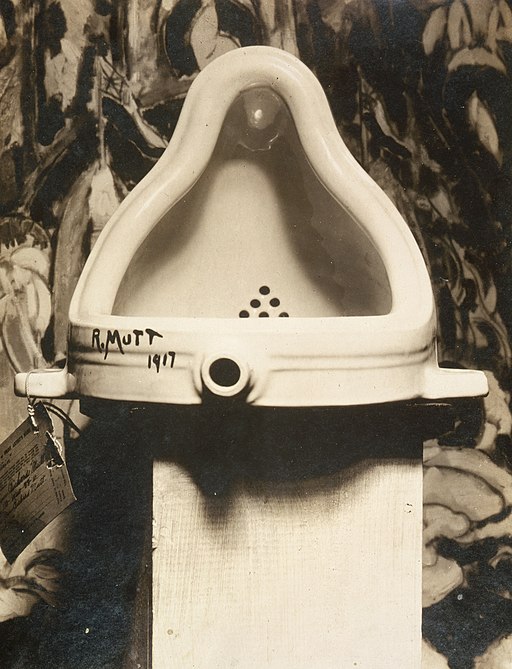
25. The Horse in Motion by Eadweard Muybridge (1878)
Eadweard Muybridge’s "The Horse in Motion" is a series of photographs capturing a horse’s gallop, pioneering the study of motion and photography. Using multiple cameras, Muybridge proved that all four of a horse’s hooves leave the ground during a gallop, resolving a long-standing debate. This work not only advanced scientific understanding of movement but also laid the groundwork for the development of motion pictures. Muybridge’s innovative techniques revolutionized photography and inspired both artists and scientists to explore new ways of capturing and understanding the world.
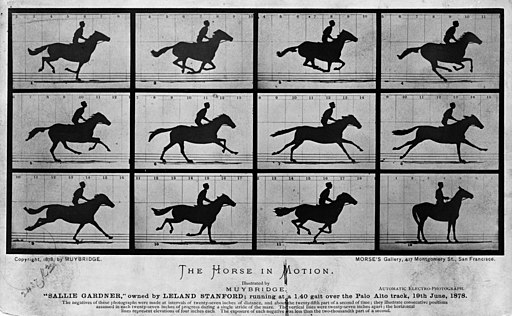
26. Guernica by Pablo Picasso (1937)
Pablo Picasso’s "Guernica" is a monumental anti-war mural created in response to the bombing of the Basque town of Guernica during the Spanish Civil War. The painting’s stark monochromatic palette and fragmented forms convey the chaos, suffering, and destruction of war. "Guernica" has become a universal symbol of the horrors of conflict and a powerful political statement against violence. Its emotive power and raw depiction of human suffering have made it one of the most important works of the 20th century, inspiring movements for peace and justice worldwide.
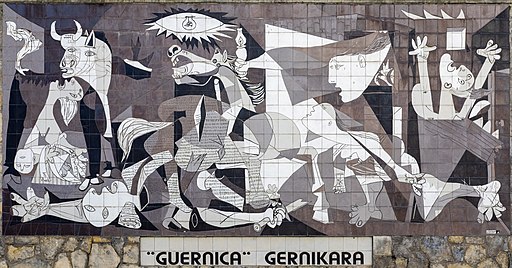
27. Olympia by Édouard Manet (1863)
Édouard Manet’s "Olympia" is a provocative painting that challenged 19th-century conventions of beauty and morality. Depicting a reclining nude woman unapologetically meeting the viewer’s gaze, the work caused controversy for its frank portrayal of sexuality. "Olympia" rejected the romanticized depictions of women common in classical art, presenting a modern, self-assured figure. This painting marked a shift toward realism and modernism, influencing generations of artists to explore contemporary themes and question societal norms.
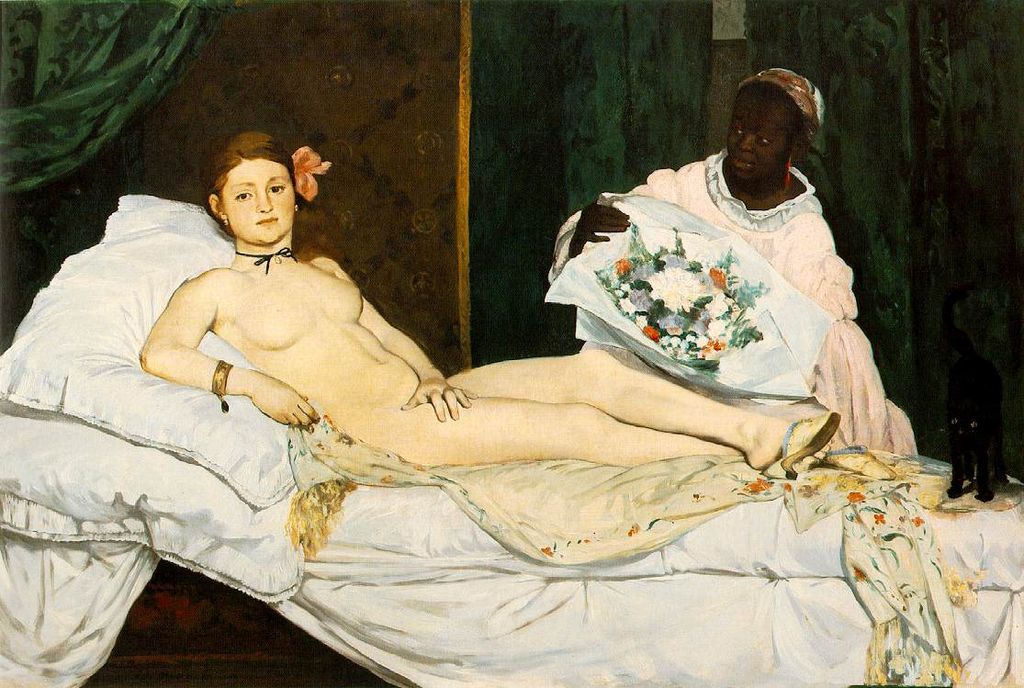

28. Campbell’s Soup Cans by Andy Warhol (1962)
Andy Warhol’s "Campbell’s Soup Cans" is an iconic work of Pop Art that elevated everyday consumer goods to the status of fine art. By replicating the familiar soup cans in a grid format, Warhol blurred the lines between high art and popular culture. This work challenged traditional hierarchies in art, questioning notions of originality and authorship. "Campbell’s Soup Cans" became a symbol of the commercialization of culture and the transformative power of art to reflect and critique society.
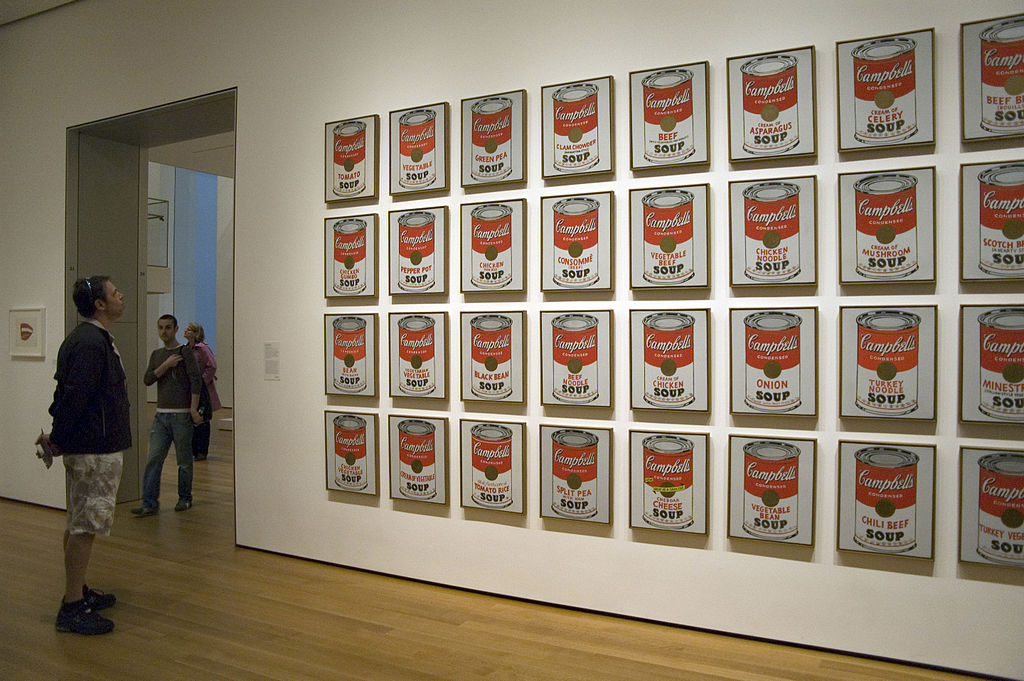

29. The Dinner Party by Judy Chicago (1979)
Judy Chicago’s "The Dinner Party" is a groundbreaking feminist installation celebrating women’s contributions throughout history. The work features a triangular table with place settings for 39 notable women, each represented through symbolic imagery. By highlighting the often-overlooked achievements of women, "The Dinner Party" challenged the male-dominated art world and brought attention to gender inequality. This powerful piece continues to inspire conversations about representation, equality, and the role of women in art and society.
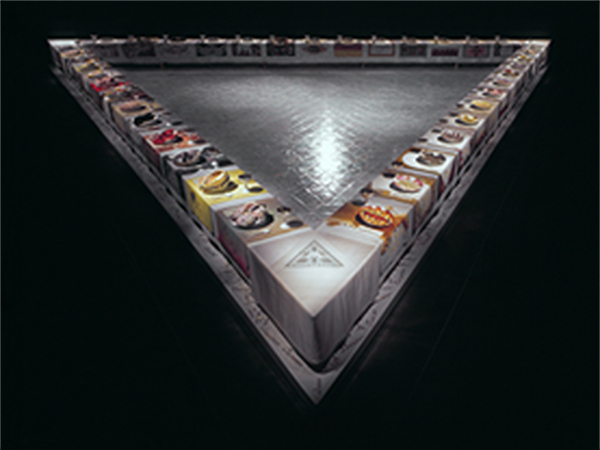

30. Untitled (Portrait of Ross in L.A.) by Félix González-Torres (1991)
Félix González-Torres’ "Untitled (Portrait of Ross in L.A.)" is an interactive installation consisting of a pile of candy, representing the body weight of the artist’s partner before his death from AIDS. Viewers are invited to take a piece of candy, symbolizing the gradual loss experienced during the AIDS crisis. This poignant work explores themes of love, loss, and impermanence, creating a deeply personal yet universal narrative. By engaging the audience directly, González-Torres redefined the boundaries of art, making it a shared and transformative experience.
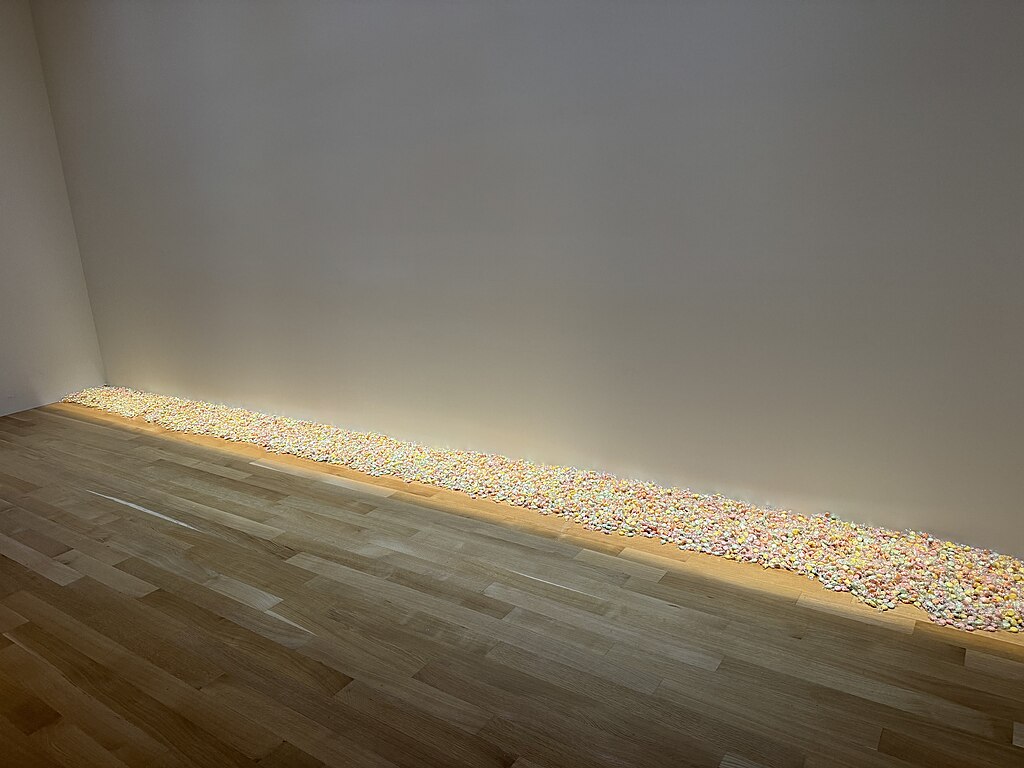
These 30 revolutionary artworks are more than just creations; they are milestones that pushed boundaries and redefined societal norms. Each piece tells a story of innovation, resistance, or transformation—showcasing art’s powerful role in shaping our collective consciousness. By exploring these masterpieces, we honor their creators and gain deeper insight into the cultural and historical shifts they represent. Let these groundbreaking works inspire your journey through the ever-evolving world of art.
Similar Posts
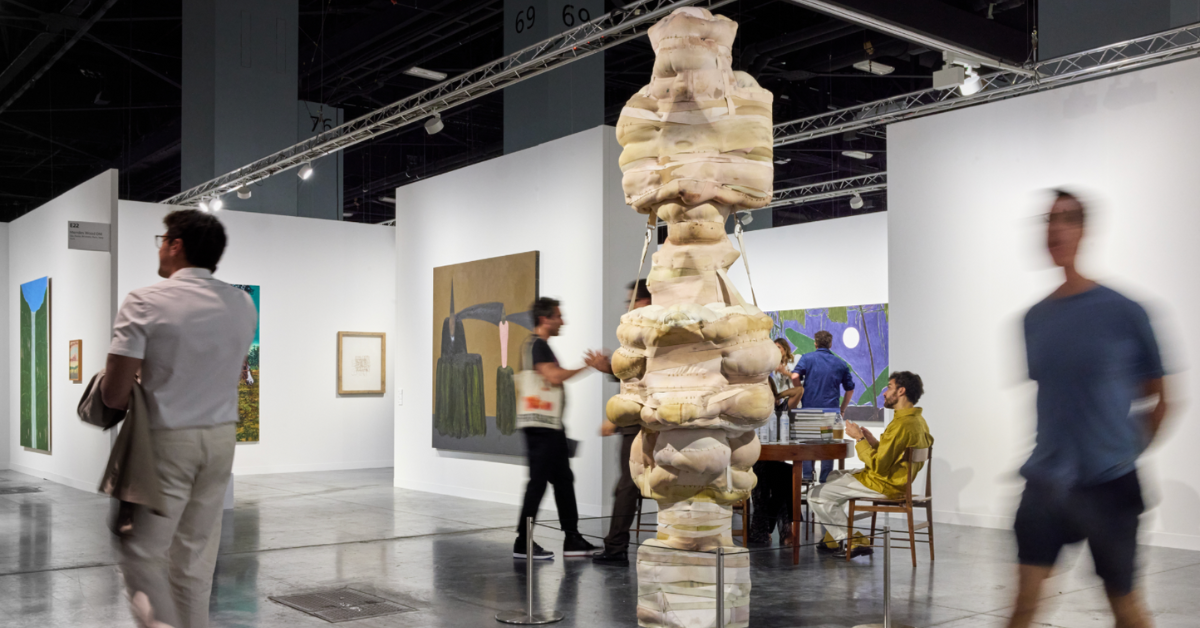
Crossroads of Culture: Highlights from Art Basel Miami Beach 2025

Spotlight Series: Artists who took center stage during Miami Art Week

Savor the Season: Bulla Gastrobar Unveils a Spanish-Inspired Fall Menu

The Sound Inside Us: How Music Rewires the Mind and Restores the Soul
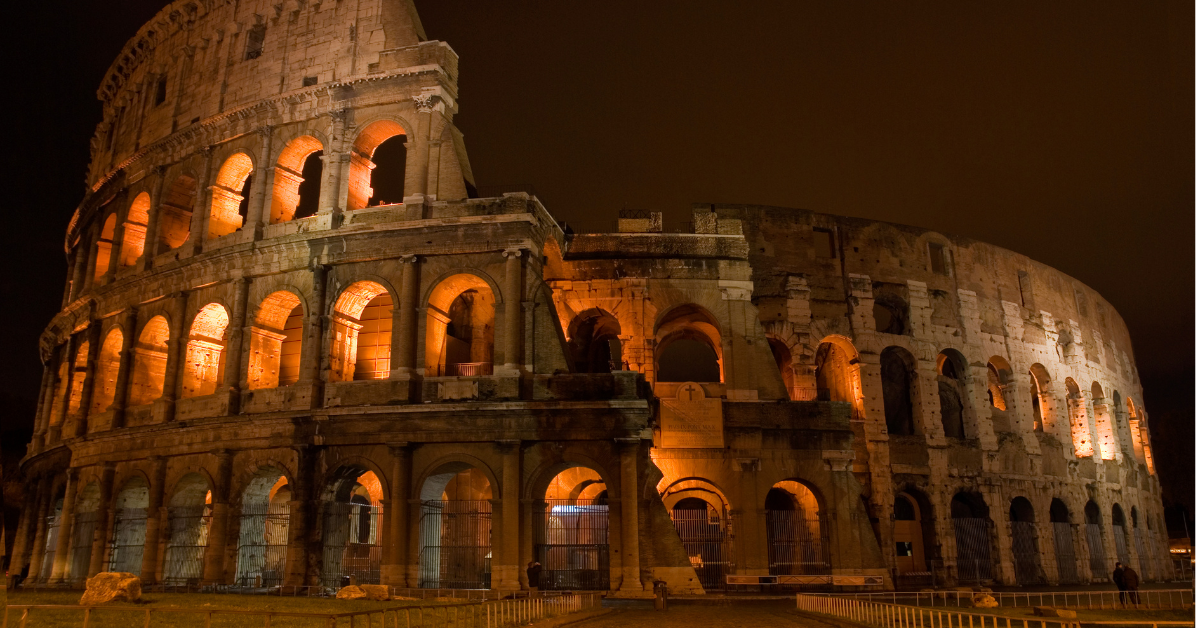
The Colosseum’s New Encore: From Gladiators to Global Music Stages
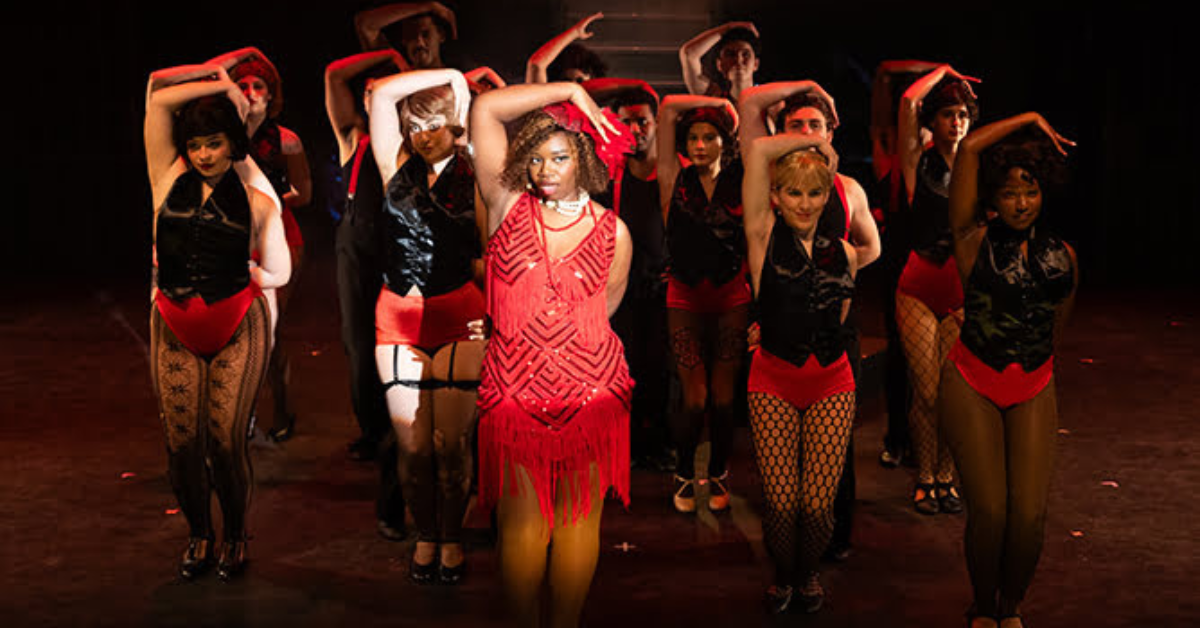
Experience World-Class Performances for Less with Tomorrow's Stars
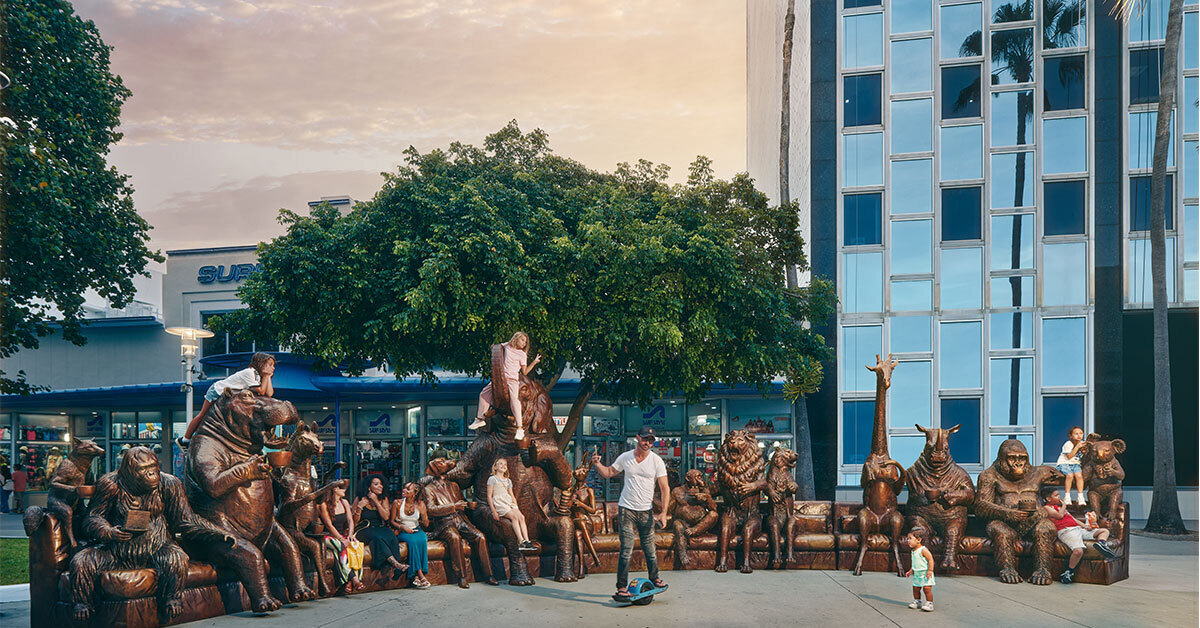
Miami's Lincoln Road Turns Into a Free Open-Air Sculpture Garden for Miami Art Week 2025
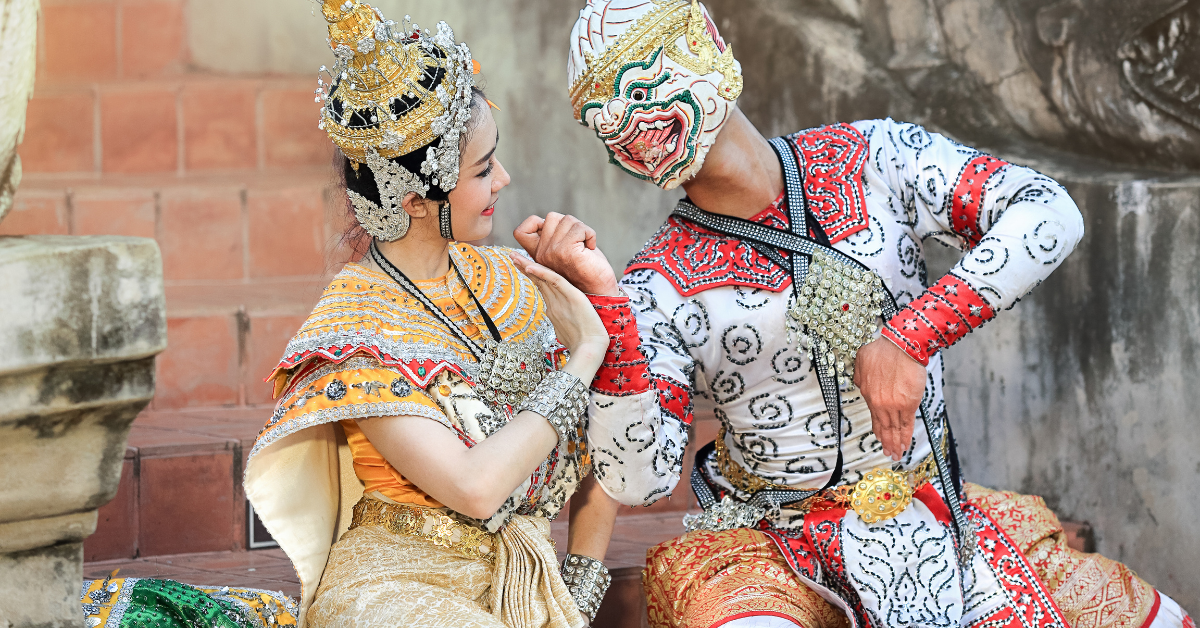
From Sacred Rituals to Global Stages: A Living History of Theater
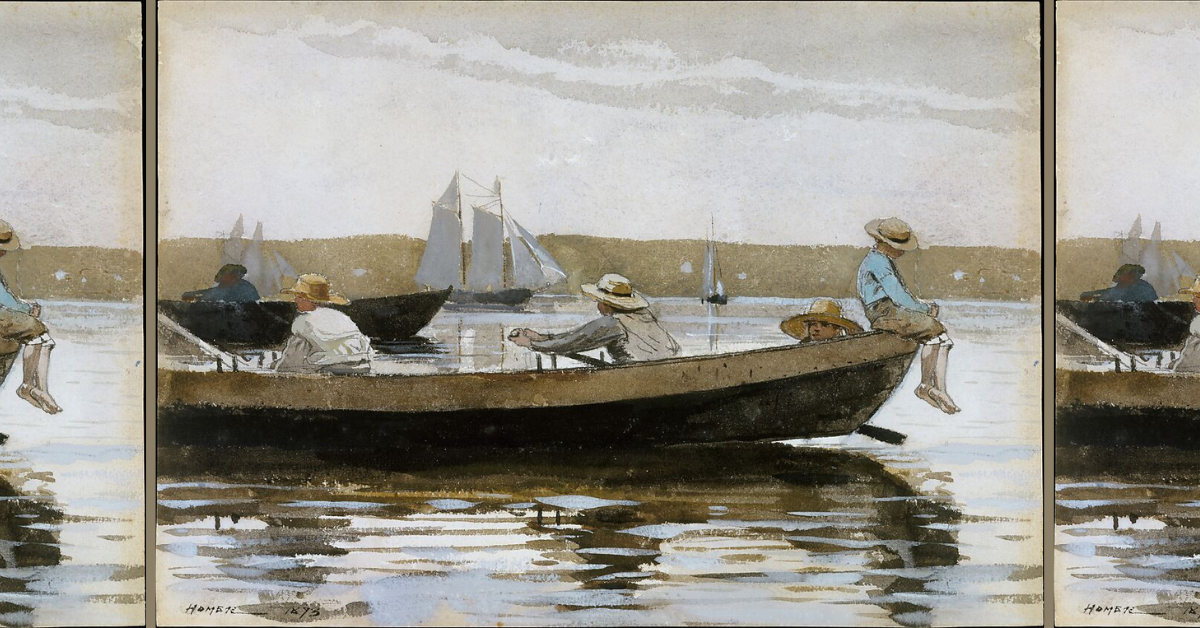
The Evolution of Culture Through the Arts

A Culture Lover’s Sarasota, Florida Guide: Art, Performance & Creative Things to Do

The Ultimate Hollywood Florida Arts & Culture Guide
